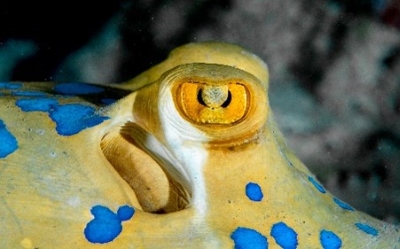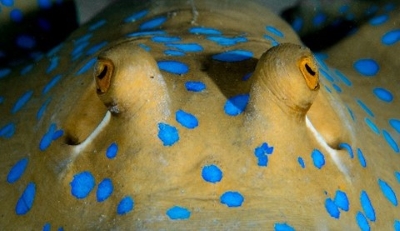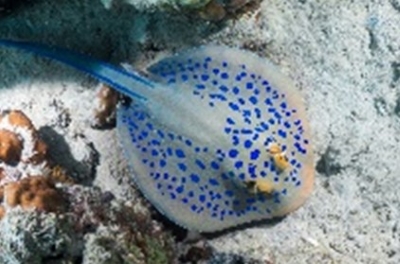Unveiling the secret of the stingray's electric blue
City University of Hong Kong (CityUHK) researchers have uncovered a unique mechanism for producing the brilliant blue skin of ribbontail stingrays. This discovery sheds light on how nature can create vibrant colors through the particular arrangements of nanostructures, a process known as structural coloration. This research delves into the fascinating world of natural optics, revealing a novel approach to color production that could inspire new technologies for creating robust, chemistry-free colors on a variety of materials.
Nature's color palette is surprisingly diverse, with blues most often created not by pigments but by light reflecting structures at extremely small size (nano) scales. These nanostructures, found on butterfly wings, peacock feathers and flowers, produce brilliant structural colors and the way these nanostructures are arranged plays a key role in how the color appears. While ordered structures create iridescent colors that change with the viewing angle, as in hummingbird feathers, some natural structural blues are invariant with viewing angle, making them intriguing models for understanding how nature evolves and builds stable colors.
A recent study led by Professor Mason Dean, Associate Professor in the Department of Infectious Diseases and Public Health and Amar Surapaneni, postdoc at CityUHK, explored this conundrum by studying the skin spots of ribbontail stingrays, which exhibit a consistent electric blue hue, regardless of how they are viewed.



The bright electric blue spots of ribbontail stingray. The blue spots not only act as visual signals in the animal’s natural environment, but also can inspire novel bioinspired material applications. (Photo credit: Morgan Bennett-Smith)
"We discovered that this unique blue is produced by specialized skin cells with a stable 3D arrangement of nanoscale spheres containing reflecting nanocrystals (akin to pearls suspended in bubble tea). Interestingly, these nanoscale spheres are neither completely ordered nor disordered; they exist in an intermediate state, called ‘quasi-order’," said Professor Dean.

This partially ordered arrangement reflects only blue, while its disorder helps deflect blue wavelengths in all directions—thus, the color remains unchanged regardless of the viewing angle. To eliminate any extraneous colors, a thick layer of melanin underneath the color-producing cells absorbs all other wavelengths, resulting in an extremely bright blue skin.
This discovery of a novel blue mechanism in a stingray, the first description of structural color in sharks and rays, illustrates how nature can use its material toolkit —quite limited compared to materials available to engineering— in diverse architectural combinations to produce color. “The design or arrangement of these materials is unique to every plant or animal, and understanding nature’s solutions to bright colors is quite fascinating,” said Prof. Dean. In particular, the structural designs and physical principles responsible for stingray color are fantastic models for robust, chemistry-free colors on stretchy soft materials like bioinspired textiles, flexible displays, screens and sensors.
The findings —a CityU collaboration with researchers in Austria, Germany and Belgium— were published in the journal Advanced Optical Materials, titled “Ribbontail Stingray Skin Employs a Core–Shell Photonic Glass Ultrastructure to Make Blue Structural Color” and the research is supported by University Grant Committee with General Research Fund.
A forthcoming article will be published in the journal Frontiers in Cell and Developmental Biology, titled “Intermediate filaments spatially organize intracellular nanostructures to produce the bright structural blue of ribbontail stingrays across ontogeny”.
For enquiry, please contact Professor Mason Dean, Associate Professor in the Department of Infectious Diseases and Public Health at CityUHK (email: mndean@cityu.edu.hk).